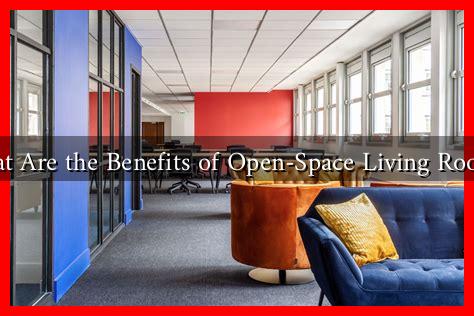-
Table of Contents
What Are the Benefits of Open-Space Living Rooms?
Open-space living rooms have become increasingly popular in modern home design, offering a blend of functionality, aesthetics, and social interaction. This architectural trend emphasizes the removal of walls and barriers, creating a seamless flow between the living room, dining area, and kitchen. In this article, we will explore the numerous benefits of open-space living rooms, supported by research, statistics, and real-world examples.
Enhanced Social Interaction
One of the most significant advantages of open-space living rooms is the promotion of social interaction among family members and guests. With fewer physical barriers, individuals can engage in conversations and activities more freely. This design fosters a sense of community and togetherness, making it ideal for families and those who enjoy entertaining.
- Family Bonding: Parents can supervise children while cooking or working in the living area, enhancing family connections.
- Entertaining Guests: Open spaces allow hosts to interact with guests while preparing food or drinks, creating a more inclusive atmosphere.
Improved Natural Light and Ventilation
Open-space living rooms often benefit from increased natural light and better airflow. With fewer walls obstructing windows, sunlight can penetrate deeper into the home, creating a brighter and more inviting environment.
- Health Benefits: Natural light is known to improve mood and overall well-being. A study by the National Institutes of Health found that exposure to natural light can enhance productivity and reduce stress.
- Energy Efficiency: Increased daylight can reduce the need for artificial lighting, leading to lower energy bills.
Flexible Space Utilization
Open-space living rooms offer unparalleled flexibility in how space is utilized. Homeowners can easily rearrange furniture and decor to suit their needs, whether for a cozy family movie night or a large gathering.
- Multi-Functional Areas: An open living room can serve multiple purposes, such as a play area for children, a workspace, or a relaxation zone.
- Adaptable Design: Homeowners can easily modify the layout as their needs change over time, making it a long-term investment.
Increased Property Value
Open-space living rooms can significantly enhance the appeal of a home, making it more attractive to potential buyers. According to a report by the National Association of Realtors, homes with open floor plans tend to sell faster and at higher prices compared to traditional layouts.
- Market Demand: Many buyers today prefer open-concept designs, viewing them as modern and desirable.
- Visual Appeal: Open spaces create a sense of grandeur and spaciousness, making homes feel larger than they are.
Design Aesthetics
Open-space living rooms allow for a cohesive design aesthetic throughout the home. With fewer walls, homeowners can create a unified look that flows seamlessly from one area to another.
- Consistent Decor: A single color palette or design theme can be applied throughout the open space, enhancing visual harmony.
- Creative Opportunities: Homeowners can experiment with different design elements, such as lighting fixtures and furniture styles, without the constraints of walls.
Conclusion
Open-space living rooms offer a multitude of benefits, from enhancing social interaction and improving natural light to providing flexible space utilization and increasing property value. As modern lifestyles evolve, the demand for open-concept designs continues to grow, making them a smart choice for homeowners looking to create functional and inviting living spaces. By embracing the open-space trend, individuals can enjoy a more connected, adaptable, and aesthetically pleasing home environment.



